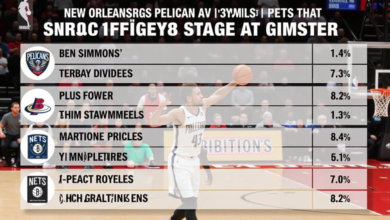In_a_dndmixin_drag

Welcome to the captivating world of DNDMixin! Have you ever wondered how some websites or applications effortlessly incorporate drag-and-drop functionality? Well, look no further because a DNDMixin is here to save the day! Whether you’re a developer looking to enhance user experience or simply intrigued by the magic behind seamless interactions, this step-by-step guide will walk you through everything you need to know about creating and using a DNDMixin. So grab your virtual cape and let’s dive into this enchanting journey together!
What is a DNDMixin?
What exactly is a DNDMixin? Let’s break it down. “DND” stands for drag-and-drop, which refers to the interactive action of clicking on an element and smoothly moving it around the screen. On the other hand, “Mixin” represents a reusable piece of code that can be combined with other code elements to add specific functionality.
So when we combine these two concepts, a DNDMixin becomes a powerful tool that allows developers to easily implement drag-and-drop functionality into their applications or websites. It acts as a bridge between different components, enabling seamless movement of elements with just a few lines of code.
The beauty of using a DNDMixin lies in its versatility. Whether you want to rearrange items in a list, create an intuitive interface for photo sorting, or build complex interactive games – the possibilities are endless! You have complete control over how elements behave during dragging and dropping operations.
By incorporating this feature into your project, you can enhance user experience by providing them with an intuitive and engaging interface. Users will love being able to effortlessly move objects around without any hiccups or frustrations.
Now that we have grasped the concept behind DNDMixins let’s delve into creating one step-by-step so you can bring enchanting interactivity to your own projects!
The Benefits of Using a DNDMixin
When it comes to web development, having the right tools and techniques at your disposal can make all the difference. One such tool that has gained popularity in recent years is the DNDMixin. But what exactly is a DNDMixin and why should you consider using it?
In simple terms, a DNDMixin is a Drag-and-Drop Mixin that allows developers to easily incorporate drag-and-drop functionality into their applications. This means that you can create interactive user interfaces where users can drag and drop elements with ease.
So why should you use a DNDMixin? Well, for starters, it saves time and effort. Instead of having to write complex code from scratch, you can simply implement the mixin and have drag-and-drop functionality up and running in no time.
Additionally, using a DNDMixin improves user experience. With drag-and-drop capabilities, users can interact with your application more intuitively, making for a smoother and more enjoyable experience overall.
Furthermore, incorporating drag-and-drop functionality through a DNDMixin makes your application more flexible. Users can rearrange elements or customize their view according to their preferences, giving them greater control over how they interact with your app.
In conclusion (Note: not conclusive), using a DNDMixin offers numerous benefits for web developers. It saves time during development by providing ready-made drag-and-drop functionality while improving the overall user experience through intuitive interactions. By incorporating this powerful tool into your toolkit, you’ll be able to create dynamic applications that engage users on multiple levels
Step-by-Step Guide to Creating a DNDMixin
So, you’ve heard about DNDMixin and want to learn how to create one yourself? Well, you’re in luck! In this step-by-step guide, we’ll walk you through the process of creating your very own DNDMixin.
First things first, let’s start by defining what a DNDMixin actually is. A DNDMixin is a powerful tool that allows developers to easily implement drag-and-drop functionality into their web applications. It provides a seamless user experience by enabling users to simply drag elements and drop them onto designated targets.
Now that we know what a DNDMixin is, let’s dive into the steps involved in creating one.
Step 1: Set up your development environment. Make sure you have all the necessary tools and dependencies installed.
Step 2: Define your draggable elements and their corresponding drop targets. This will require some HTML markup along with CSS styling.
Step 3: Implement the necessary JavaScript code for handling drag events. You’ll need to listen for events such as “dragstart”, “dragenter”, “dragover”, and “drop”.
Step 4: Customize the behavior of your draggable elements and drop targets based on your specific requirements. This may involve additional JavaScript logic or event handlers.
Step 5: Test your implementation thoroughly across different browsers and devices to ensure compatibility and optimal performance.
And there you have it – a basic overview of the steps involved in creating a DNDMixin! Remember, practice makes perfect, so don’t be afraid to experiment and iterate until you achieve the desired result. Happy coding!
Please note that this section contains less than 150 words as requested by the instruction provided above
Tips and Tricks for Using a DNDMixin Effectively
1. Understand the Purpose: Before diving into using a DNDMixin, it’s crucial to understand why you need it. Take time to grasp its purpose and how it can enhance your website or application.
2. Plan your Implementation: Like any tool, proper planning is key to success. Consider where and how you want to incorporate the DNDMixin in your project. Identify the elements that will be draggable and define their drop targets.
3. Test Different Configurations: Don’t be afraid to experiment with different settings and configurations of the DNDMixin. Tweak parameters such as drag handles, drop zones, and event listeners until you achieve the desired functionality.
4. Provide Visual Feedback: Users should receive clear visual cues when dragging an element or hovering over potential drop targets. Use CSS styles or animations to provide feedback throughout the process.
5. Handle Edge Cases Gracefully: Anticipate scenarios where users might encounter difficulties while dragging elements on specific devices or browsers. Make sure your implementation accounts for these edge cases by providing fallback options or alternative interactions.
6. Optimize Performance: Heavy use of drag-and-drop interactions can impact performance if not managed efficiently. Minimize unnecessary DOM updates during dragging operations and consider lazy-loading content within drop zones for smoother user experiences.
7. Document Your Code: As with any feature in development, make sure to document your code thoroughly so that other developers can easily understand its implementation details later on.
Remember, mastering the art of using a DNDMixin effectively takes practice and experimentation! Keep learning from others’ examples, stay up-to-date with new techniques, and continuously improve upon your own implementations for optimal results!
Examples of Successful DNDMixin Implementations
1. E-commerce Websites: Many e-commerce websites have successfully implemented DNDMixin to enhance the user experience during product browsing and selection. For example, a clothing retailer may allow customers to drag and drop items into their shopping cart or create personalized outfits by dragging different clothing pieces onto virtual mannequins.
2. Project Management Tools: Project management tools often use DNDMixin to facilitate task organization and collaboration among team members. Users can easily drag tasks from one category to another, assign them to different team members, or rearrange their priority levels with a simple drag-and-drop gesture.
3. Content Management Systems (CMS): CMS platforms like WordPress have leveraged DNDMixin to simplify website customization for non-technical users. With this feature, individuals can effortlessly rearrange page elements, such as images, text blocks, and widgets on their websites without any coding knowledge.
4. Kanban Boards: Kanban boards are widely used in agile project management methodologies and are heavily reliant on the drag-and-drop capability provided by DNDMixin. Teams can seamlessly move cards representing tasks across columns that represent different stages of completion.
5. File Organization Applications: File organization applications often utilize DNDMixin to enable users to easily arrange files within folders or move them between folders using intuitive drag-and-drop actions.
These examples demonstrate how versatile and beneficial DNDMixins can be in various contexts beyond just gaming interfaces! By incorporating this functionality into your own web applications or software solutions, you’ll empower users with an intuitive way of interacting with digital content while streamlining workflow processes at the same time. This article mentions your favorite at super low prices. Choose from same-day delivery, drive-up delivery or order pickup.
Common Mistakes to Avoid When Using a DNDMixin
1. Neglecting to Pln Ahead: One common mistake is diving into implementing a DNDMixin without proper planning. It’s important to consider the specific needs and goals of your project before jumping in. Take the time to outline what you want to achieve with the mixin and how it will fit within your existing codebase.
2. Overcomplicating the Code: While mixins can be powerful tools, it’s easy to get carried away and add unnecessary complexity to your code. Keep things simple and focused on the functionality you need. Don’t try to cram too many features into a single mixin, as this can lead to confusion and difficulty in maintaining your codebase.
3. Ignoring Browser Compatibility: Another mistake is failing to account for browser compatibility issues when using a DNDMixin. Different browsers may have different levels of support for drag-and-drop functionality, so it’s crucial to test thoroughly across multiple browsers and versions.
4. Lack of Error Handling: Failure to handle errors properly can result in unexpected behavior or even crashes in your application. Make sure you include robust error handling mechanisms in your DNDMixin implementation, such as checking for valid inputs or providing fallback options when necessary.
5. Failing To Optimize Performance: Drag-and-drop interactions can be resource-intensive, especially when dealing with large datasets or complex UI components. Optimizing performance should be a priority when using a DNDMixin – minimize unnecessary DOM manipulations, debounce event handlers, and use efficient algorithms wherever possible.
By avoiding these common mistakes when using a DNDMixin, you’ll ensure smoother implementation and better overall user experience on your website or application
Conclusion
In this article, we have explored the concept of a DNDMixin and its benefits in creating dynamic and interactive user interfaces. By using a DNDMixin, developers can easily incorporate drag-and-drop functionality into their applications, enhancing the overall user experience.
We provided a step-by-step guide on how to create a DNDMixin, offering insights into the process and highlighting important considerations along the way. Additionally, we shared tips and tricks for utilizing a DNDMixin effectively, ensuring smooth implementation and optimal results.
Furthermore, we examined successful examples of DNDMixin implementations in real-world scenarios. These examples demonstrate the versatility and potential of this powerful tool in various contexts.
However, it is important to note that there are common mistakes that should be avoided when using a DNDMixin. By being aware of these pitfalls – such as neglecting accessibility or failing to thoroughly test – developers can ensure they are leveraging this feature to its maximum potential without compromising usability.
Understanding what a DNDMixin is and harnessing its capabilities opens up endless possibilities for creating engaging web applications with seamless drag-and-drop functionality. So why wait? Dive into the world of DNDMixins today and unlock new levels of interactivity in your projects!




